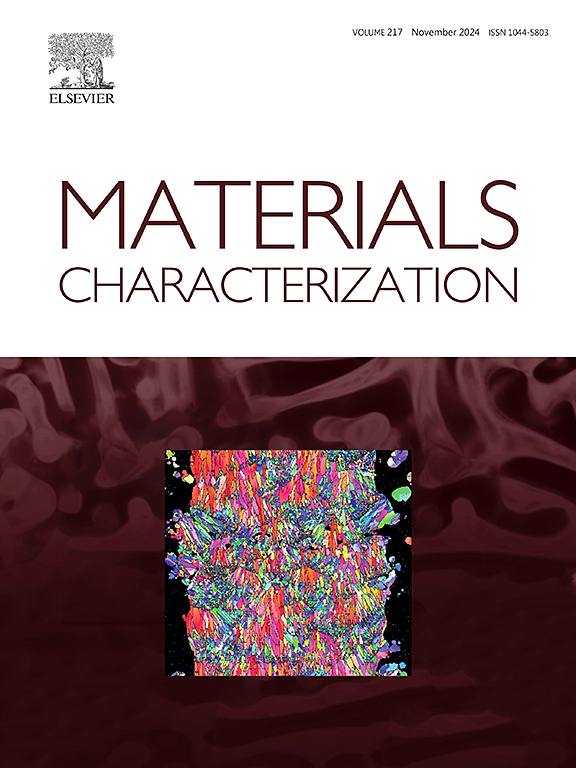Recrystallization behaviors of AlMgScZr alloys with different Al3(Sc,Zr) dispersoid distribution
IF 4.8
2区 材料科学
Q1 MATERIALS SCIENCE, CHARACTERIZATION & TESTING
引用次数: 0
Abstract
This study investigates the recrystallization behavior of Sc/Zr-modified AA5182 alloy sheet focusing on the role of Al3(Sc,Zr) dispersoid distribution during annealing across a broad temperature range (250–550 °C). It shows that densely distributed Al3(Sc,Zr) dispersoids effectively inhibit recrystallization up to 450 °C by exerting strong Zener pinning pressure, and extremely suppress particle-stimulated nucleation (PSN). By contrast, at temperatures as low as 350 °C, a sparse distribution of dispersoids exhibits diminished recrystallization resistance and fails to inhibit PSN. While Al3(Sc,Zr) dispersoids maintain excellent thermal stability below 450 °C, rapid coarsening/dissolution occurs above this threshold, triggering abnormal grain growth via strain-induced boundary migration (SIBM) in high-density dispersoid-containing alloys. HRTEM characterization reveals that dispersoid-matrix coherency evolves dynamically during grain boundary (GB) interactions: low-angle GBs (LAGBs) encounter dispersoids, leading to semi-coherency by the introduction of misfit dislocations. High-angle GBs (HAGBs) bypass dispersoids, resulting in incoherency at the Al3(Sc,Zr)/Al interface.
不同Al3(Sc,Zr)弥散分布AlMgScZr合金的再结晶行为
本文研究了Sc/Zr改性AA5182合金板材在250-550℃宽温度范围退火过程中的再结晶行为,重点研究了Al3(Sc,Zr)弥散分布的作用。结果表明,密集分布的Al3(Sc,Zr)分散体通过施加较强的齐纳钉钉压力,在450℃时有效抑制再结晶,并极大地抑制粒子激发成核(PSN)。相比之下,在低至350℃的温度下,分散体的稀疏分布表现出降低的再结晶阻力,并且不能抑制PSN。虽然Al3(Sc,Zr)弥散体在450℃以下保持良好的热稳定性,但在450℃以上会发生快速的粗化/溶解,从而通过应变诱导的边界迁移(SIBM)触发高密度含弥散体合金的异常晶粒生长。HRTEM表征表明,在晶界(GB)相互作用过程中,色散-基体相干性是动态演变的:低角晶界(LAGBs)遇到色散,通过引入错配位错导致半相干性。高角gb (hagb)旁路色散导致Al3(Sc,Zr)/Al界面处的非相干。
本文章由计算机程序翻译,如有差异,请以英文原文为准。
求助全文
约1分钟内获得全文
求助全文
来源期刊

Materials Characterization
工程技术-材料科学:表征与测试
CiteScore
7.60
自引率
8.50%
发文量
746
审稿时长
36 days
期刊介绍:
Materials Characterization features original articles and state-of-the-art reviews on theoretical and practical aspects of the structure and behaviour of materials.
The Journal focuses on all characterization techniques, including all forms of microscopy (light, electron, acoustic, etc.,) and analysis (especially microanalysis and surface analytical techniques). Developments in both this wide range of techniques and their application to the quantification of the microstructure of materials are essential facets of the Journal.
The Journal provides the Materials Scientist/Engineer with up-to-date information on many types of materials with an underlying theme of explaining the behavior of materials using novel approaches. Materials covered by the journal include:
Metals & Alloys
Ceramics
Nanomaterials
Biomedical materials
Optical materials
Composites
Natural Materials.
 求助内容:
求助内容: 应助结果提醒方式:
应助结果提醒方式:


